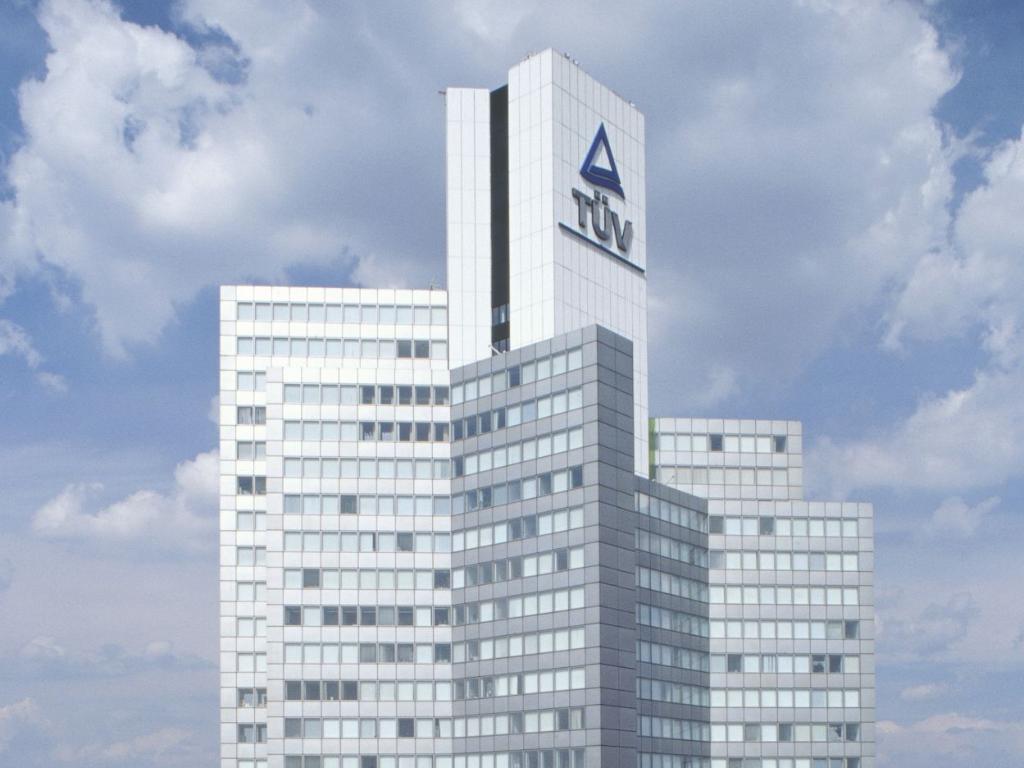TÜV Rheinland Study: Photovoltaics on Rail Infrastructure - Solar Power Could Cover Over a Quarter of Rail Power Requirements
Cologne | 23 September, 2024

The TÜV Rheinland study for the German Center for Rail Transport Research (DZSF) at the German Federal Railway Authority shows the potential of photovoltaic (PV) applications on and in the rail infrastructure. The final report just published by the DZSF documents that PV systems can not only be integrated into the rail infrastructure under the given boundary conditions, but that it is also technically possible to feed the solar power generated directly into the overhead line network. In other words: TÜV Rheinland put forward the potential of PV applications that can be installed on the rail infrastructure can generate up to 2,940 gigawatt hours of solar power per year. This could supply almost 1 million average households annually, and this regenerative potential could give the railroads an even better carbon footprint.
Photovoltaic potential can be found in all areas of infrastructure
More than a quarter of the railroad's total annual electricity requirements can be generated sustainably by PV modules in the track bed, on and in noise barriers, on noise protection walls and open areas close to the tracks, as well as on the roofs of buildings and trains. "Most of the solar power is fed directly into the overhead line network, with only a small proportion going to the railroad's own buildings on the infrastructure," says Jürgen van der Weem, railroad technology expert and project manager at TÜV Rheinland. "Direct feed-in is a feature of decentralized power generation. The electricity is generated where it is needed. The energy losses caused by repeated conversion and transportation are significantly lower."
Two years of research work went into the potential study
The team of experts from TÜV Rheinland has done the groundwork with the "Photovoltaics Potential Study". The 260-page study, which three rail experts and three photovoltaic experts from the testing service provider produced over two years of research on behalf of the DZSF, is both an inventory of the rail infrastructure and a source of inspiration for greater sustainability. All relevant PV systems and components available on the market were intensively examined regarding their suitability for railroad technology. Compared to conventional PV systems, a particular technical requirement was to investigate the specific influences, such as how vibrations and soiling affect PV components in the track bed.
To determine the PV potential, the experts from TÜV Rheinland calculated the usable areas and determined the installable feed-in power and the achievable feed-in energy. The total available and usable area in and around the rail infrastructure amounts to 30 km2. This corresponds to around 4,300 soccer pitches.
Three scenarios that improve the carbon footprint of the railways
In the study, the team of experts from TÜV Rheinland provide three railroad scenarios as a conclusion, which are evaluated according to feasibility and electricity generation costs.
Scenario A combines PV systems with high technical and economic potential and low electricity generation costs. These include ground-mounted systems, railroad stations, canopies, noise barriers and noise protection walls. The annual PV potential is 380 gigawatt hours and could be implemented in the short term.
Scenario B shows a similar distribution of PV applications, but with proportionately higher potential and slightly higher Levelized Cost of Electricity (LCOE). The total potential amounts to 910 gigawatt hours per year.
Scenario C considers the exploitation of all technically possible potential options. The electricity generation costs were assumed to be 25 ct/kWh under optimal conditions. The annual potential of 2,940 gigawatt hours of solar power would cover almost 27 percent of the total electricity demand with an average annual electricity demand of around 11,000 gigawatt hours.
The rail infrastructure, which is already operating at the limits of its capacity, would be supplemented by the integration of PV applications. Ultimately, however, all challenges must be overcome with minimal risk. TÜV Rheinland therefore recommends in its study that the PV potential from scenario A that can be realized in the short term should first be tapped and practical experience gathered for further steps to exploit the entire PV potential of the rail infrastructure.
Visit TÜV Rheinland from September 24 to 27, 2024 at InnoTrans in Berlin in Hall A, Stand 405.
About TÜV Rheinland
Safety and quality in almost all areas of business and life: This is what TÜV Rheinland stands for. The company has been active for more than 150 years and is one of the world's leading testing service providers. TÜV Rheinland has more than 20,000 employees in over 50 countries and generates an annual turnover of around 2.3 billion euros. TÜV Rheinland's highly qualified experts test technical systems and products around the globe, support innovations in technology and business, train people in numerous professions and certify management systems according to international standards. The independent experts thus ensure trust along global flows of goods and value chains. TÜV Rheinland has been a member of the United Nations Global Compact for more sustainability and against corruption since 2006. Website: www.tuv.com
Your contact for editorial questions:

TÜV Rheinland Press Office
Tel.: +49 2 21/8 06-21 48
You can also receive current press releases as well as topic-related photos and videos by e-mail